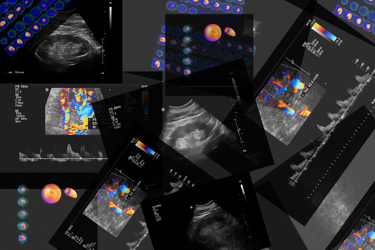How Multimodal Imaging Is Reshaping Photonics Engineering

By John Oncea, Editor

Multimodal imaging dominates photonics engineering interest in 2025, offering broader applications and faster innovation cycles compared to specialized cryo-EM.
The photonics engineering landscape in 2025 is witnessing an unprecedented surge in innovative imaging technologies, with two approaches competing for dominance: multimodal imaging (MMI) and cryo-electron microscopy (cryo-EM). While both technologies represent significant advances in our ability to visualize and understand complex systems at microscopic scales, MMI has emerged as the clear frontrunner in capturing the attention and investment of the photonics community.
Multimodal imaging, which integrates multiple imaging techniques to obtain comprehensive views of biological structures and processes, has gained remarkable momentum across diverse applications. According to recent research from MIT, multimodal approaches are demonstrating superior performance in complex diagnostic applications, achieving accuracy rates exceeding 76% in challenging medical imaging scenarios. The technology's appeal lies in its ability to combine the strengths of different imaging modalities while overcoming the limitations of individual techniques.
The integration capabilities of MMI have proven particularly compelling for photonics applications. Research published by the National Institute of Standards and Technology demonstrates how multimodal information systems are advancing the effectiveness of multimedia data access and processing technologies. This governmental endorsement reflects the technology's maturity and practical applicability across multiple domains.
Recent developments in AI-powered multimodal systems have further accelerated adoption rates. Studies from academic institutions show that the integration of artificial intelligence algorithms with multimodal neuroimaging data holds tremendous potential for enabling early diagnosis and prediction of complex disorders. These advances highlight how MMI systems can leverage machine learning to extract meaningful insights from combined datasets, a capability that resonates strongly with photonics engineers working on intelligent optical systems.
The versatility of MMI extends across numerous photonics applications. University research has demonstrated novel hybrid deep learning methods that combine CNNs, GRUs, and attention mechanisms to effectively blend spatial and temporal brain data, achieving an impressive 96.79% accuracy in complex classification tasks. This technological flexibility makes MMI particularly attractive for photonics engineers developing next-generation optical systems that require sophisticated data fusion capabilities.
The manufacturing and industrial applications of MMI also have gained significant traction. The Florida Semiconductor Institute recently unveiled the Novel Performance-Driven 3D Imaging System for Extremely Noisy Objects (NPIX), which combines X-ray laminography and computed tomography to offer high-definition volumetric scans with minimal imaging noise. This advancement demonstrates how MMI directly addresses real-world challenges in semiconductor packaging and hardware security applications.
In contrast, while cryo-EM continues to make important strides in structural biology, its impact on the broader photonics engineering community remains more limited. The National Cancer Institute's Cryo-EM Facility provides high-resolution imaging capabilities that have enabled groundbreaking discoveries in cancer research. Still, these applications represent a narrower scope compared to the broad applicability of MMI systems.
Recent innovations in cryo-EM technology, such as the MagIC-cryo-EM technique developed for structural analysis of scarce macromolecules, demonstrate the technology's continued evolution. This method enables direct structural analysis of targets captured on magnetic beads, reducing concentration requirements by several orders of magnitude. However, these advances primarily benefit researchers in structural biology and biochemistry rather than the broader photonics engineering community.
The cost and accessibility factors also favor the adoption of MMI. While cryo-EM installations require significant infrastructure investments and specialized facilities, MMI systems can often be implemented using existing optical components and enhanced through software-based approaches. This accessibility aligns well with the photonics industry's drive toward cost-effective solutions that can be deployed across diverse applications.
Educational and training considerations further support MMI's prominence. The Department of Energy's cryo-EM course offerings, while valuable for specialized applications, require extensive training in sample preparation, data collection, and analysis techniques. Multimodal imaging systems, particularly those enhanced with AI capabilities, often provide more intuitive interfaces and automated analysis workflows that reduce the learning curve for photonics engineers.
The integration potential with emerging photonics technologies strongly favors MMI. Recent research on multimodal bioimaging highlights how these approaches can be combined with spatial 'omics' profiling techniques, creating unprecedented opportunities for comprehensive analysis. This integration capability positions MMI as a platform technology that can evolve alongside advancing photonics capabilities.
Market dynamics also reflect the growing preference for MMI solutions. The global microscopy market is projected to grow from $9.7 billion in 2024 to $13.3 billion by 2029, with artificial intelligence and multimodal integration driving much of this growth. This market expansion indicates strong commercial viability for MMI technologies.
Industry collaborations are increasingly focusing on MMI development. The recent partnership between Prophesee and Eoptic to integrate high-speed event detection into prismatic sensor modules exemplifies how photonics companies are investing in multimodal capabilities. Such collaborations demonstrate the technology's commercial attractiveness and practical implementation potential.
The data analysis and processing capabilities of MMI systems also appeal to photonics engineers. Advanced multimodal fusion techniques enable sophisticated data integration and analysis workflows that can extract comprehensive insights from complex datasets. These capabilities are particularly valuable for photonics applications requiring real-time processing and decision-making.
Looking toward future developments, MMI's trajectory appears more aligned with broader photonics industry trends. The technology's compatibility with emerging artificial intelligence frameworks, its scalability across diverse applications, and its integration potential with existing optical systems position it as a foundational technology for next-generation photonics innovations.
While cryo-EM will undoubtedly continue to play a crucial role in specialized applications, particularly in structural biology and materials science, MMI has established itself as the more applicable and rapidly evolving technology for the photonics engineering community. Its combination of versatility, accessibility, and integration potential makes it the clear choice for engineers seeking to push the boundaries of optical system capabilities in 2025 and beyond.
The evidence strongly suggests that MMI represents the future of photonics innovation, offering the flexibility and capability needed to address the diverse challenges facing today's optical system designers and researchers.
